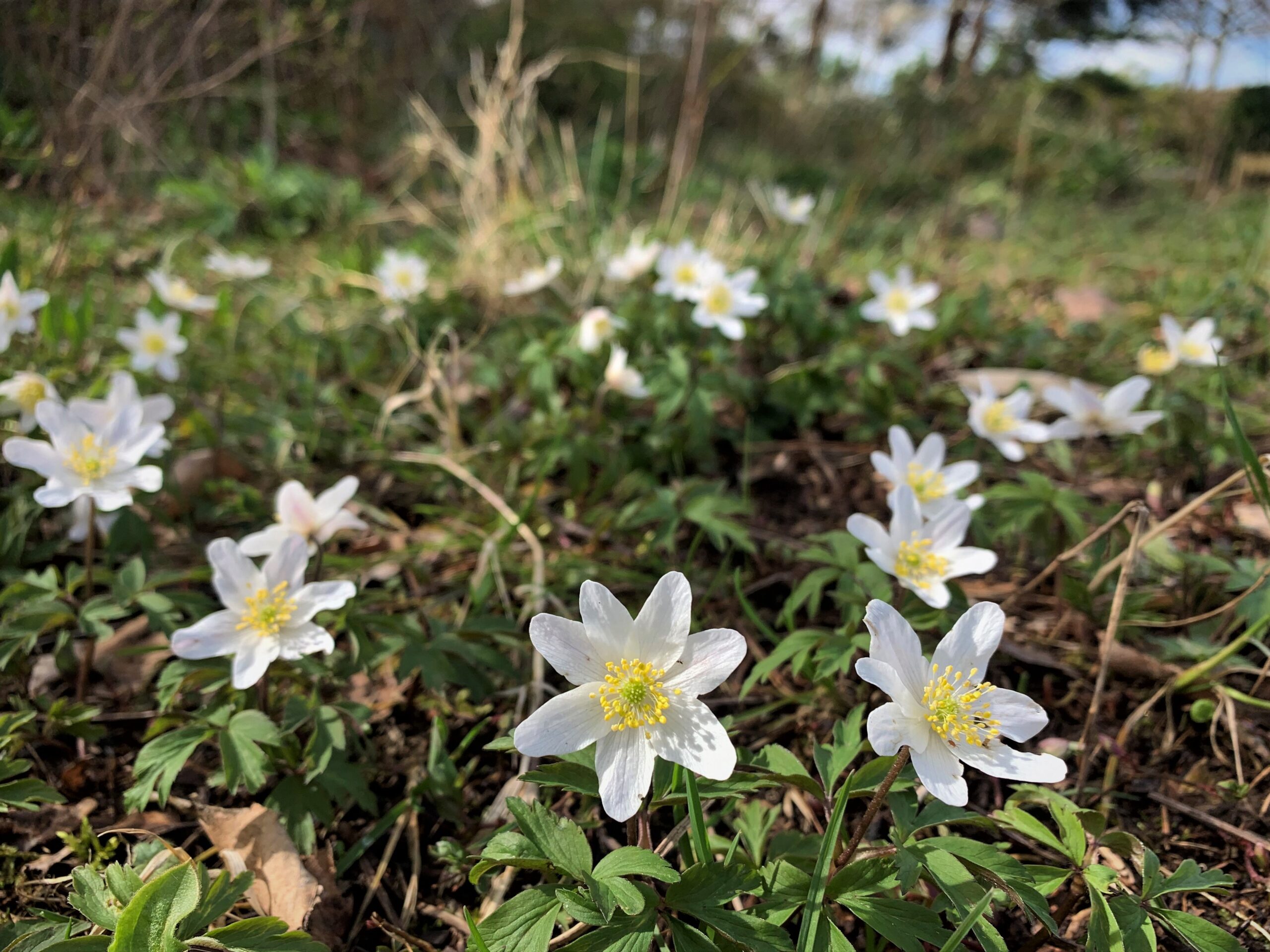Spring is finally here with wood anemones, muscari and primroses blooming in the woodland and magnolia and plum blossom bursting out on the trees. Be wary of heavy showers and frosty nights, but there will be warm sunny days to get out and enjoy the garden. This is an exciting time to get on with seed sowing, planting potatoes, taking care of your lawn and enjoying the birdsong.
Garden Updates
First cut and lawn maintenance
We have changed our lawn maintenance over the last few years with the focus on mowing as little as possible. Long grass is one of the most important environments for wildlife in gardens, and a lawn can be so much more than grasses. By making less frequent cuts and setting the blades higher, you will be surprised at the diversity of plants that are waiting to pop up, attracting a host of birds and insects. By gradually reducing the height of the cut as the weather gets warmer, the lawn will be a much healthier and more resilient green sward. We add all the clippings to our compost, mixing it well with dry, brown material such as twiggy branches or cardboard to stop it becoming a smelly wet sludge.
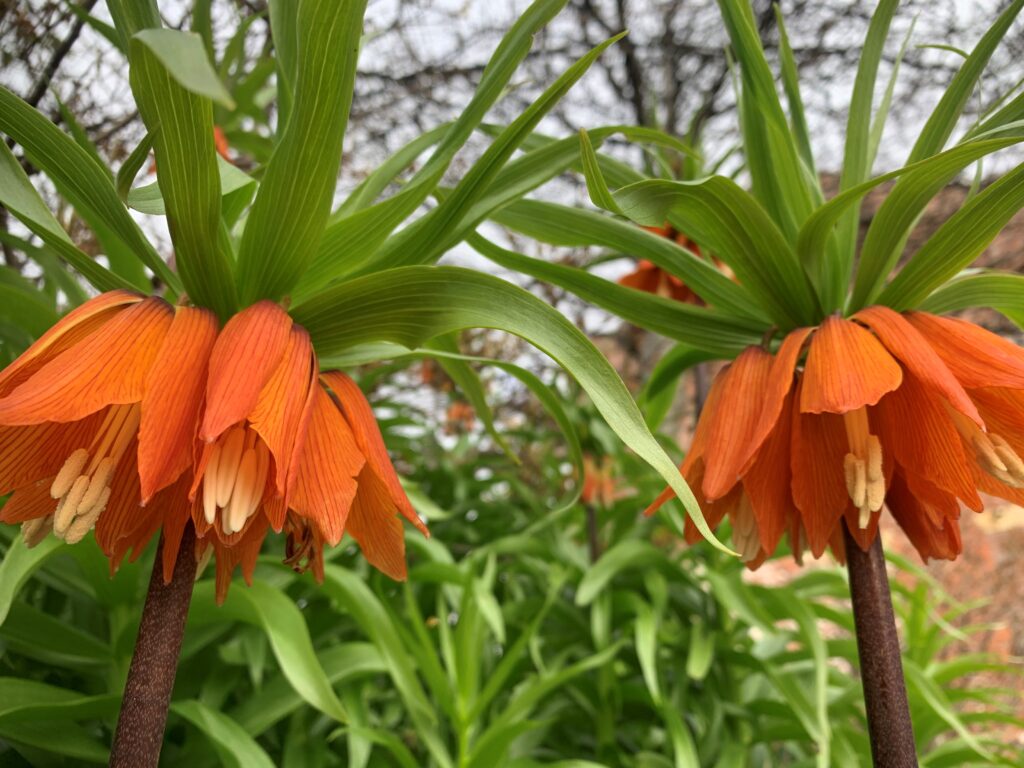
Bulbs
Some of the earlier bulbs are beginning to go over, and it is a good idea to spend some time deadheading to prevent the plant putting its energies into seed production rather than storage reserves in the bulb. It’s also important to let the leaves die back naturally to let the bulb store energy for flowering next year. Now is the perfect time to plant snowdrops and winter aconites ‘in the green’ as they are much more successful planted when growing rather than as a dried bulb in the autumn. If you have large clumps they can be lifted carefully so as not to damage the bulbs, gently tease apart and replant elsewhere to the same depth.
Crown imperial fritillary are stunning exotic looking bulbs flowering along the white seat border; so called because the petals hang down in a circle to form a crown. They are found in the wild across Turkey to India where they are pollinated by birds. A botanist working in Cambridge found that these flowers are pollinated by blue tits. Until recently, it was thought no plants in Europe were pollinated in this way.
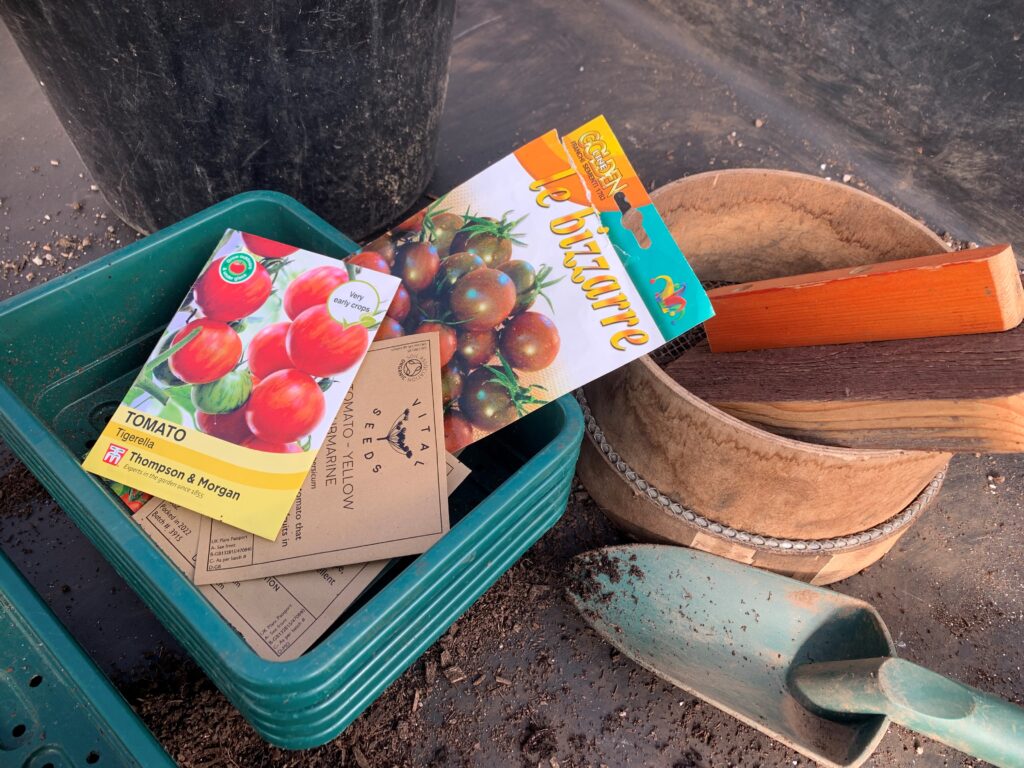
Growing notes
Plant potatoes – First earlies
It’s time to plant out the ‘first early’ potatoes. These are the new potato varieties and we have been chitting ours for the last few weeks to encourage healthy shoots which give a head start to grow when planted out. If you don’t have a garden you can still plant 1 or 2 tubers in a large pot of compost. Plant in the bottom third of the pot and cover with compost, and when the new growth appears mound more soil up around the plants. This protects early shoots from frost and ensures new tubers aren’t exposed to light that can make them green and poisonous. Potatoes are hungry and thirsty plants so will appreciate well-rotted manure or compost. Don’t let them dry out.
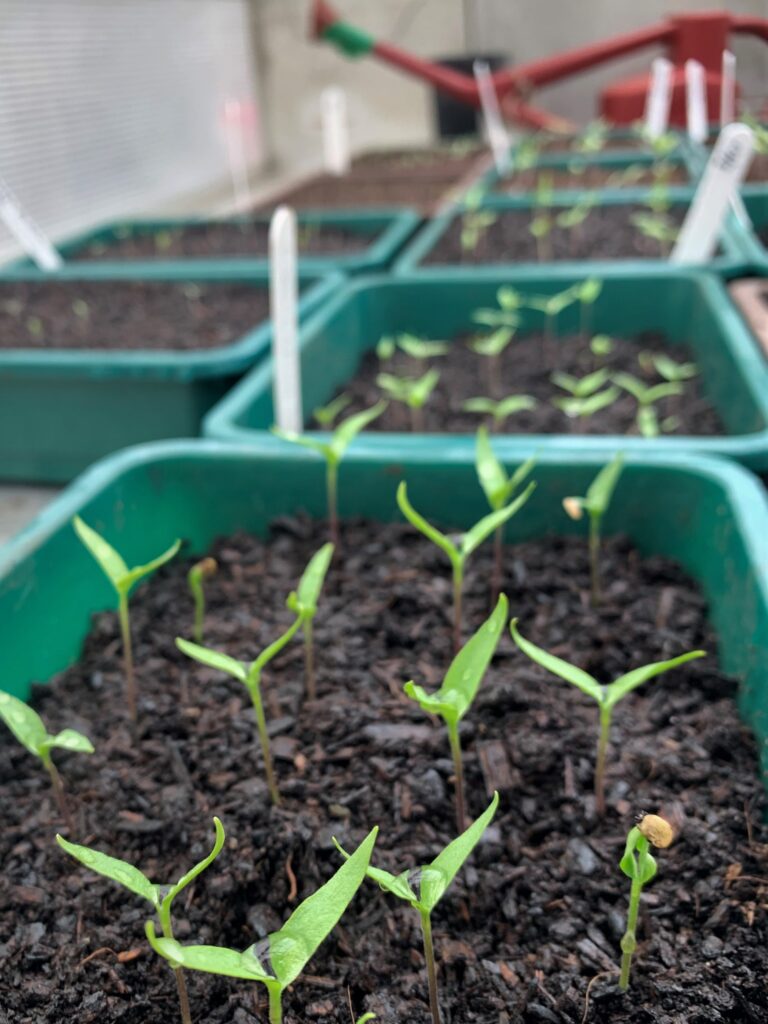
Seed sowing and slugs and snails
We are stepping up seed sowing of hardy annuals and vegetables for the greenhouse and in the potager. We tend to start seedlings off indoors to give them a good start before planting out, where they have to face the munching molluscs and changeable weather. Slugs and snails are often regarded as gardeners’ enemies, but they are actually very efficient recyclers of vegetable matter. Unfortunately, they don’t really discriminate between a fallen leaf and a delicious young seedlings. There are over 30 species of slugs in the UK, and it’s not necessarily the largest that do the most damage. Most live in the soil and are a vital part of decomposition and nutrient recycling. So what can we do to stop us getting angry when we come across slugs and snails? Grow strong healthy seedlings in plenty of light without stressing them with temperature fluctuations, but don’t mollycoddle them and they will become strong and healthy and be able to survive the odd hole in a leaf here and there. Don’t over feed plants which makes them produce the soft sappy growth slugs love, and finally encourage predators into the garden to help you keep a healthy balance – thrushes and frogs, beetles, centipedes and hedgehogs all love a slug meal. Provide them with homes and shelters, avoid toxic chemicals such as slug pellets, and be tolerant of a wee bit of collateral damage here and there.
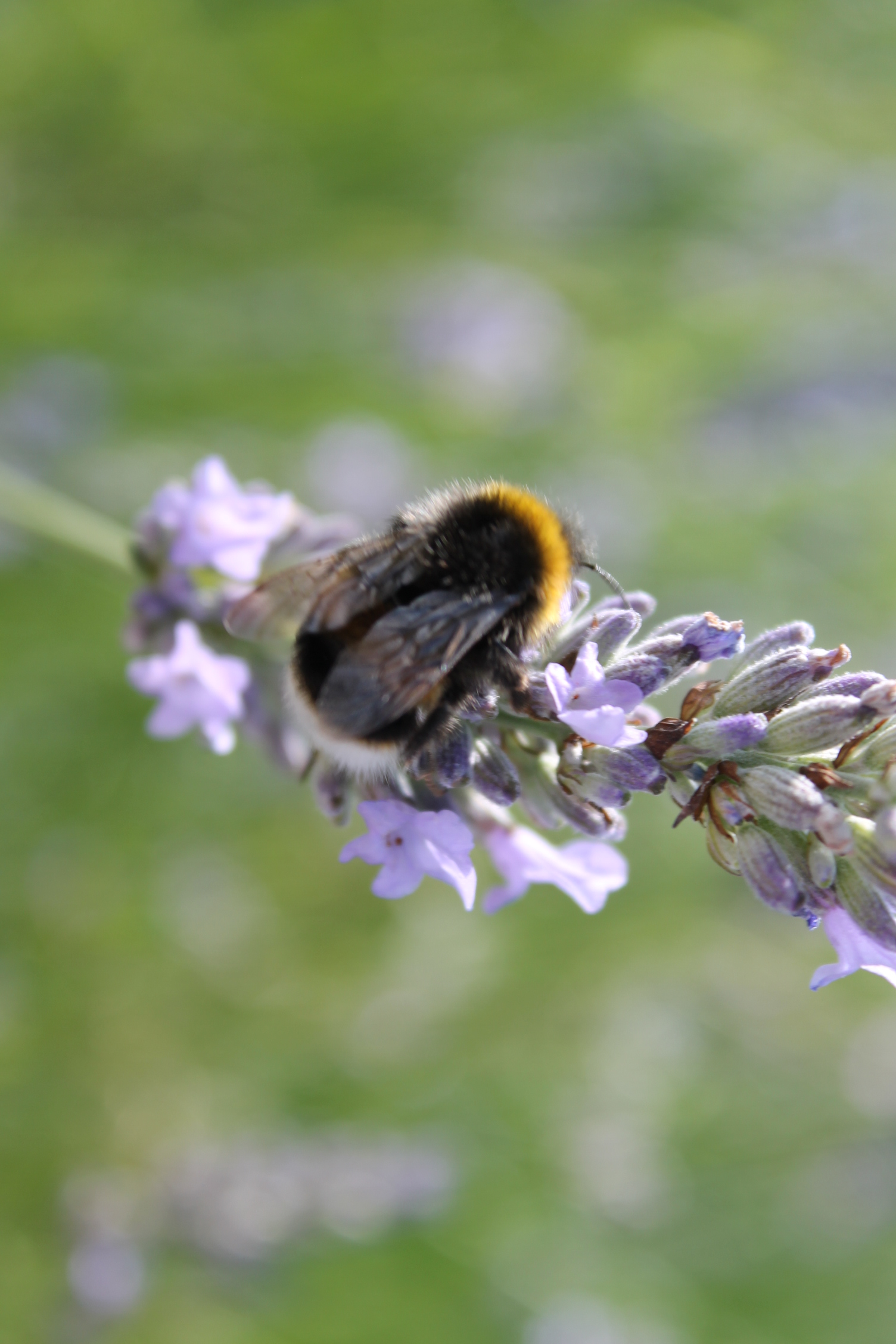
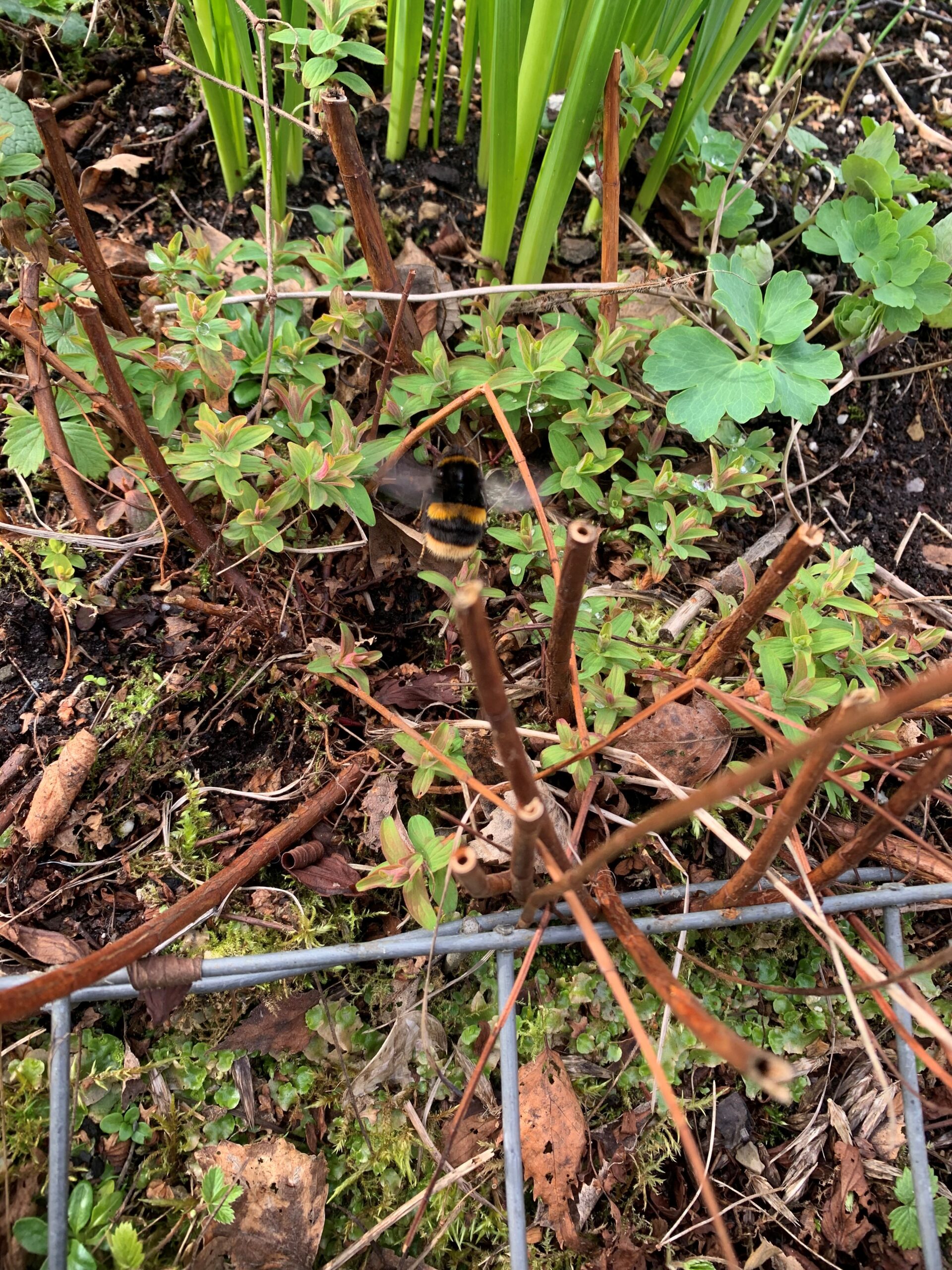
Nature notes
This is the month to look out for the first bluebells and cuckooflowers, and our wildlife areas have a carpet of wild garlic. Did you know that you can make delicious pesto with it?
With the rising temperature, large queen bumblebees emerge from their winter hibernation and begin to forage for nectar-rich flowers to gather the energy they need for their activities. They then begin to look for suitable nest sites; old mouse holes, tussocky grass, birdboxes or garden sheds. We were delighted that this buff-tailed bumblebee seemed impressed with the mossy cavities within the log-filled gabions of the bee and butterfly border. When she has chosen her nest she will collect pollen to bring back to the nest, which she forms into a mound with the wax she produces, and lays her first brood of eggs.

